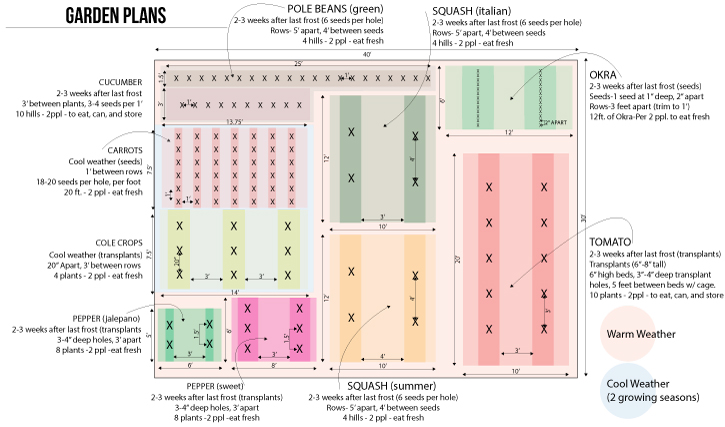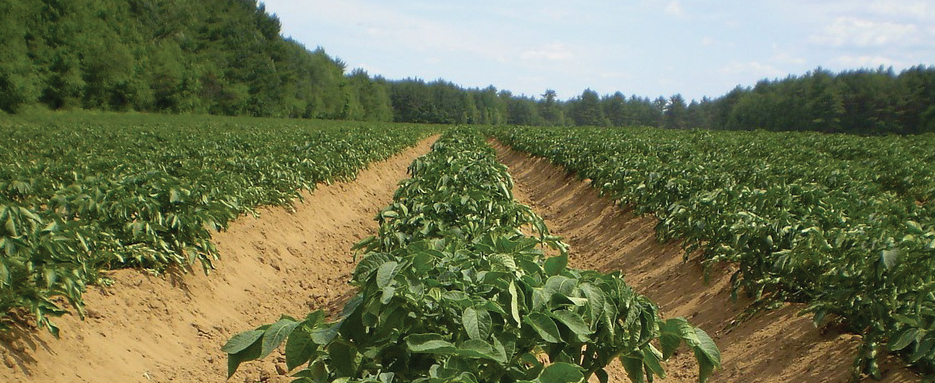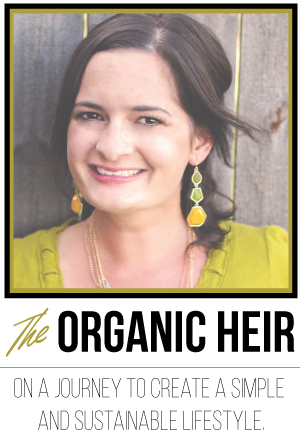 I was able spend sometime this last weekend planning the Garden! I am sure that we will not end up following this plan exactly since we won’t know how many of our seeds will germinate. But, I think having a solid idea is a good place to start!
I was able spend sometime this last weekend planning the Garden! I am sure that we will not end up following this plan exactly since we won’t know how many of our seeds will germinate. But, I think having a solid idea is a good place to start!
 Texas A&M has abundant resources for gardening in Texas. I cannot tell you helpful that is for a Texas transplant! I’m from Chicago and the soil down here is soooo much different than it is back home. Our soil here in Texas is mostly clay. In another month or so, I plan to send in my soil for testing to see what I’m up against. Again, soil testing is another amazing resource provided by Texas A&M.
Texas A&M has abundant resources for gardening in Texas. I cannot tell you helpful that is for a Texas transplant! I’m from Chicago and the soil down here is soooo much different than it is back home. Our soil here in Texas is mostly clay. In another month or so, I plan to send in my soil for testing to see what I’m up against. Again, soil testing is another amazing resource provided by Texas A&M.
I am a believer in research! I always feel better when I have some knowledge on what I’m doing. I think that if you decide to garden, the best thing to do is research your area. I would advise against blindly following advice found in books, and ahem! ON THE INTERNET! I said blindly following…Books and the web are great resources and tools. But, it is super important to know what region the author’s experience lies.
Personally, I use Texas A&M as a resource, as well as several books written by Texas authors. I am also part of a Facebook group that is specifically for North Texas gardeners. All have been super valuable resources. Another wonderful way to learn is to meet other folks who garden in your area. I am willing to bet they have a wealth of knowledge of what works best in your region!
What type of gardening is right for me?
There are several types of gardens; container gardening, raised bed gardening, and row gardening. And, on top of that, there are thousands of different “methods” of gardening. My advise is to first evaluate your goals and your space.
Container Gardening
Container gardening is exactly as it sounds, growing things in a contained space. Usually, this contained space is some sort of a pot. Container gardening is awesome for small spaces, apartments, and urban areas. If your space is just to small to fit a few containers, there are a number of things that can be grown in a bright window.
Better yet…there are communities gardens! Community gardens are so cool because they are designated spaces where folks come together to share their passion for gardening! Usually, you will get your own designated space for your garden. Often times, these community gardens provide a lot of the tools and resources to get started! Sometimes, these gardens are available for free and sometimes you have to rent the space. A simple Google search should help you to find any local community gardens.
Raised Beds
Raised beds are a great alternative to container gardening! Basically, a raised garden bed is a bottomless and a topless box that is laid on the ground and filled with soil. These boxes can be maid from wood, plastic boards, cement, or any other suitable material.
Raised beds are really popular because you can fill them with any soil you choose! Meaning, you can go buy the best black gold on the market to grow your food in! Also, you can get creative when the location and construction of these babies! They are so much more compact than growing directly in the ground and you can really do some intensive gardening in a pretty small space. I’ve even seen some raised off the ground and some on wheels! Raised beds are easy to maintain, weed, water, and harvest. Hands down, this type of gardening is the most popular.
Row Gardening
Row gardening is when you establish your garden plot directly in the ground, and usually in mounded rows. This type of gardening requires a lot more space than containers or beds. This is also the method that “conventional” agriculture uses. Often times, row gardening get’s a bad rap because it doesn’t use space and resources (like fertilizer and water) as efficiently as the other methods do.
Since we have quite a bit of land, we decided to plant directly into the soil. The first year, we really will not be able to amend the soil. However, we plan to compost and build the soil health season after season. We also plan to practice organic gardening methods, as well at The Back to Eden Garden Method. You can watch the documentary for FREE to see what’s all about! Click the image and it will take you to Vimeo to watch the film, or visit the website directly by clicking here.
What we did (UPDATE)
For our first growing season in the new house, we went pretty large. Approximately 30′ X 40′. To establish the plot, we tilled the soil (read post, I have a lot to say about tilling). I didn’t exactly follow my garden plans (see above), however I did get to plant everything I planned!
We started establishing the first plot in January 2015. In February, I did a few experiments with directly sewing lettuce and cole crop seeds to test germination. To my surprise, I had a wonderful germination rate! By March, I was able to get the tomatoes and peppers transplanted. Then, the rain hit! April and May were some of the wettest months on record here in North Texas. All that rain, ironically didn’t help the garden. Plus, we never had a chance to put down our mulch, so the plant experienced a lot of soil splash.
Because of the rain, the second round of transplants were pretty late getting planted. I think this probably stunted their growth a bit. However, they still produced, but, maybe not quite as well as they may have if there hadn’t been so much rain. Overall, Summer 2015, despite the weather related obstacles, was a success!
Summer 2015 Garden
- Tomatoes
- Okra
- Italian Squash
- Summer Squash
- Green Beans
- Cucumber
- Peppers (ancho, jalapeno, and bell)
So, what do you do? Do you wing it or do you plan your garden ahead of time?







